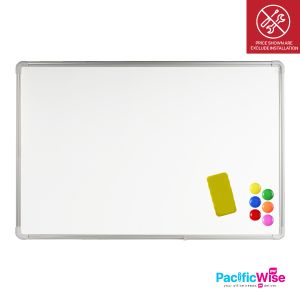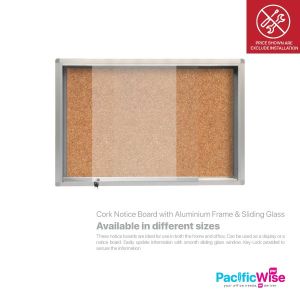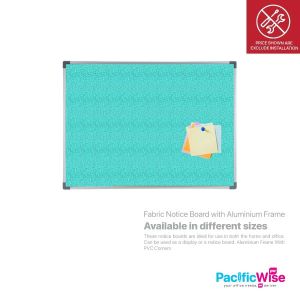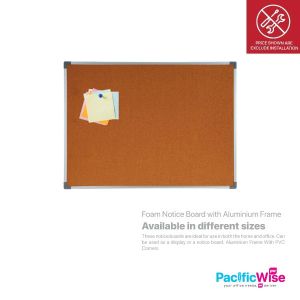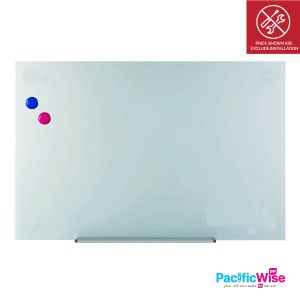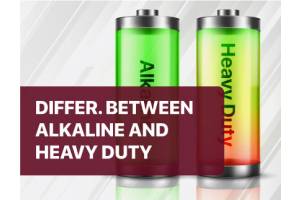Which Whiteboard is Best
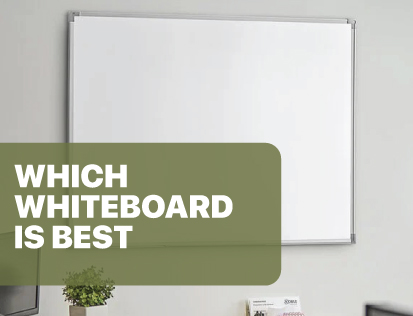
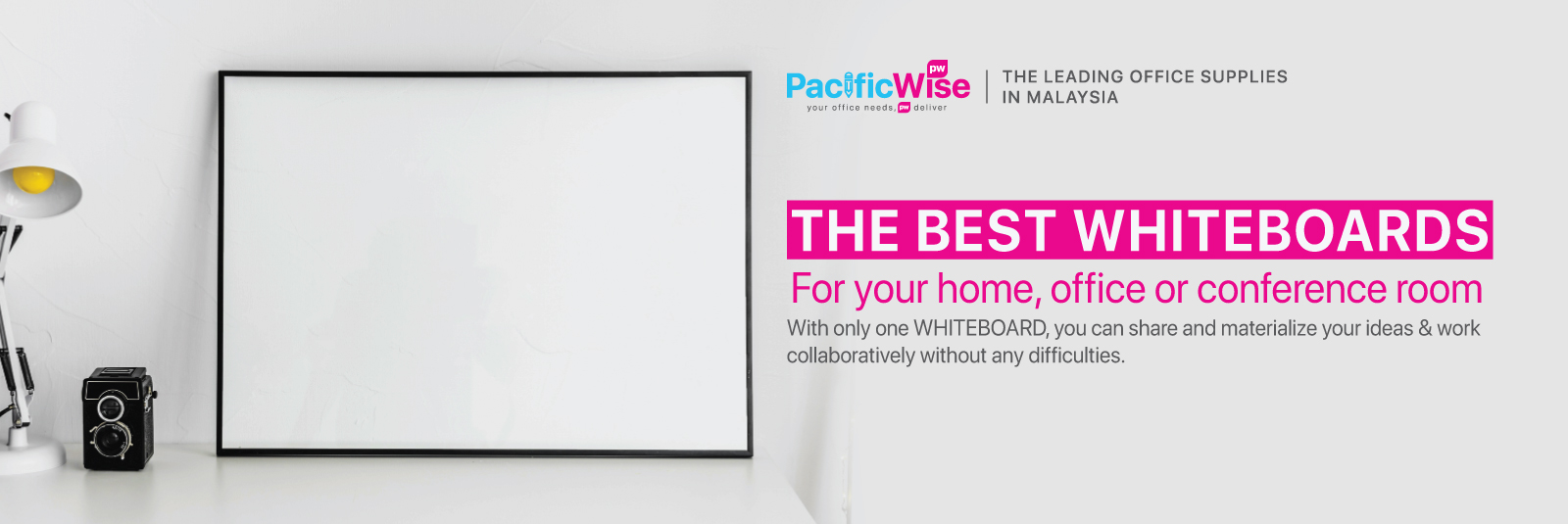
No matter how many tools and technologies for productivity, document-sharing, and note-taking are invented, there’s nothing like the feeling of writing out ideas on pen and paper — or on pen and whiteboard. Whiteboards can be a useful productivity tool for remote, office and hybrid workers alike. They help share ideas and visualize thought processes for everyone in the meeting. In this post, we'll give you our best recommendations for whiteboards that work best for your particular office setup.
The best whiteboards for your home, office or conference room
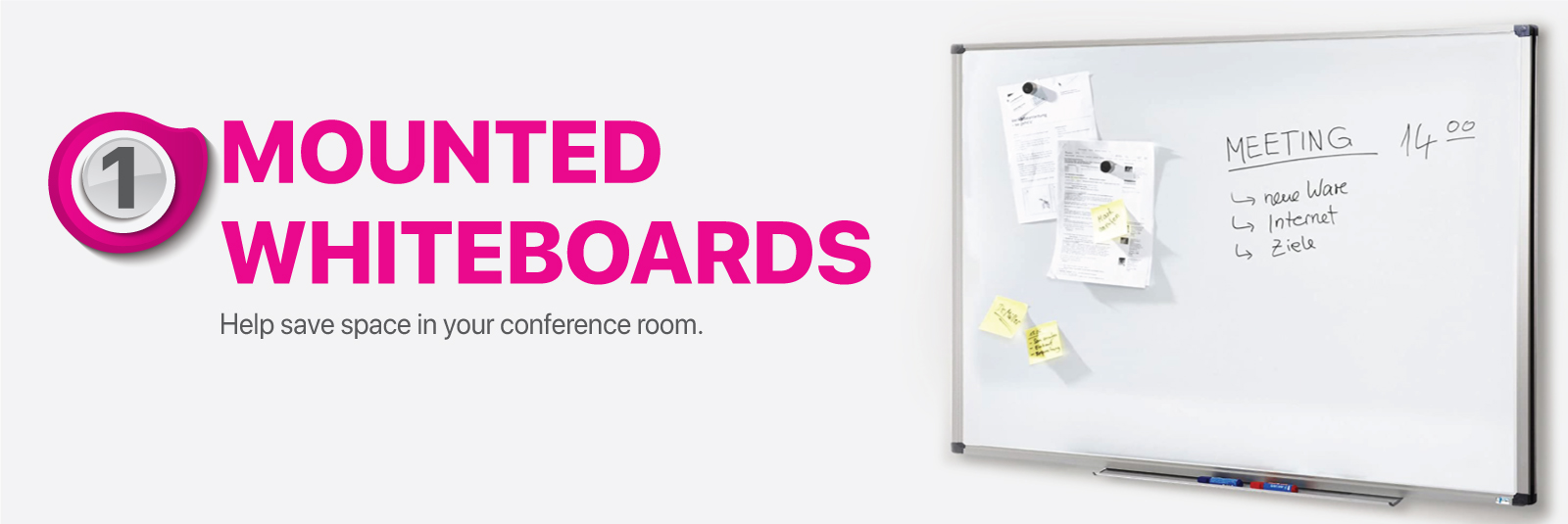
1. Mounted whiteboards
Just like at home, Mounted whiteboards help save space in your conference room. By mounting them on a wall at the right level, you or your teams won’t have to strain their backs struggling to take down notes. We recommend choosing a glass or porcelain whiteboard, both of which leave little to no leftover residue after erasing, making it easier for others to view what’s been printed.
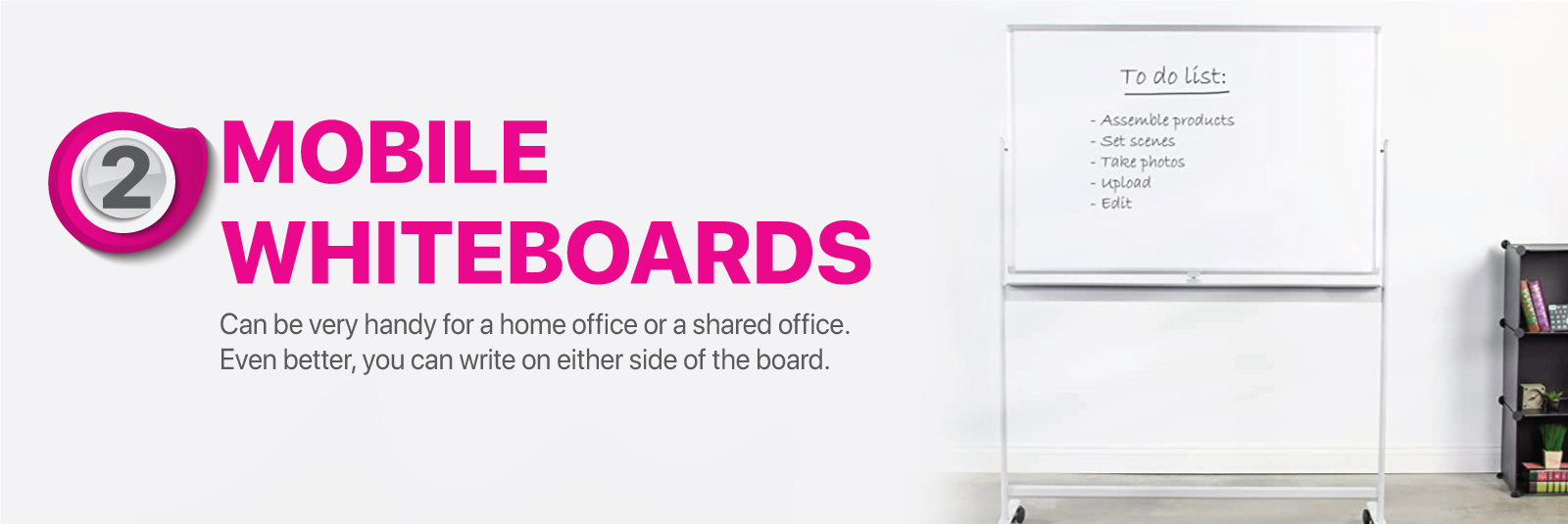
2. Mobile whiteboards
This whiteboard can be mounted on the wall or attached to a metal frame with rubber castor wheels. Even better, you can write on either side of the board. Mobile whiteboards can be very handy for a home office or a shared office. For remote workers working out of their homes, a mobile whiteboard can make any part of their home a productive one. For small offices, whiteboards can be useful if you have limited conference room space and employees need to be able to have productive breakout conversations.
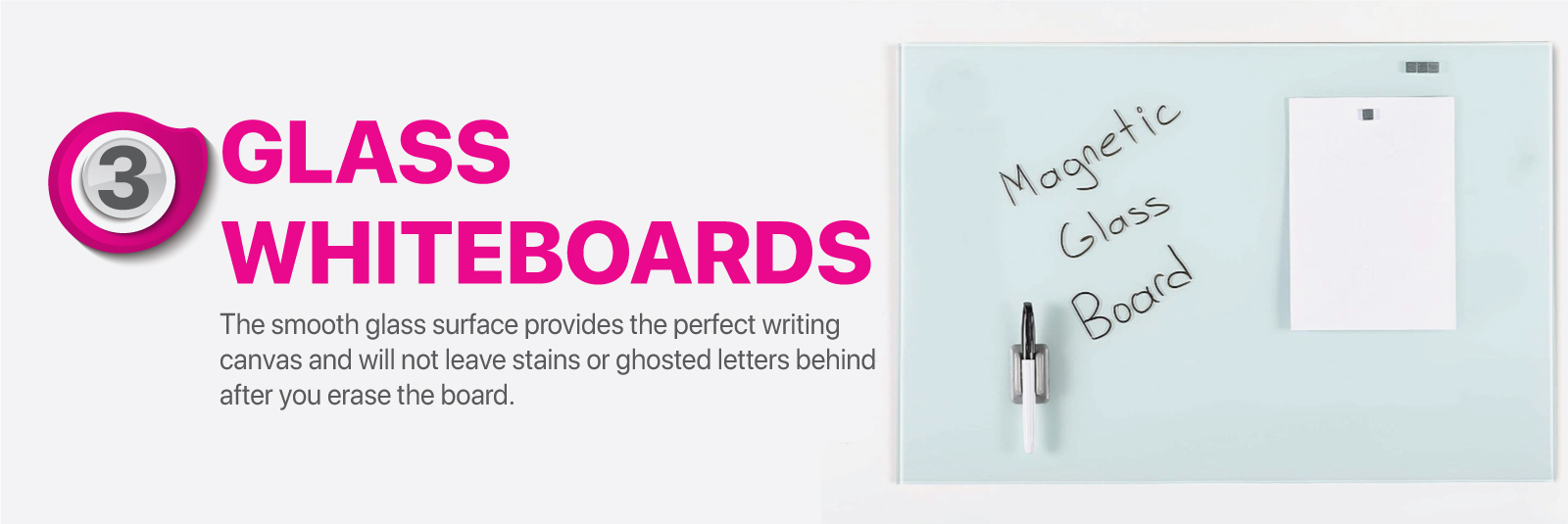
3. Glass whiteboards
If you want the best of the best, choose a glass dry-erase board. These stylish boards add a contemporary twist to your space and are a top choice for many newly renovated offices and classrooms. Made with tempered glass, these boards are extremely durable and will not scratch or dent. The smooth glass surface provides the perfect writing canvas and will not leave stains or ghosted letters behind after you erase the board.
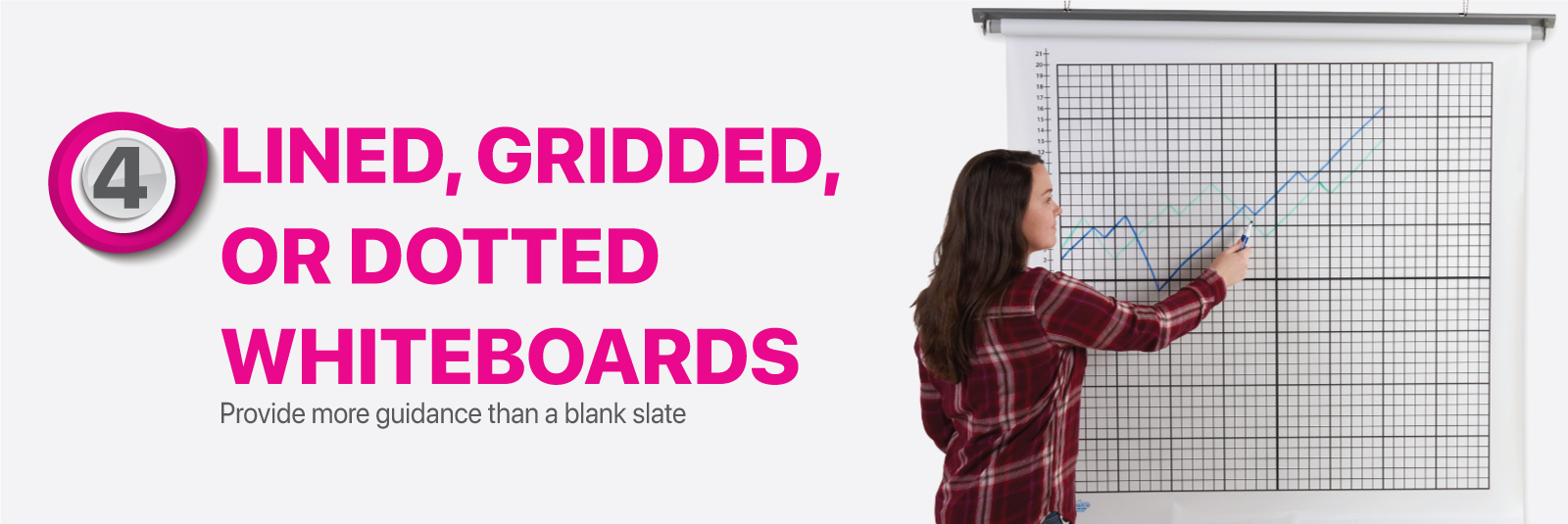
4. Lined, gridded, or dotted whiteboards
Lined, gridded, or dotted whiteboards provide more guidance than a blank slate for anyone taking notes or diagramming ideas. For anyone who is a visual learner or who is working on a project that needs specific formatting, a preformatted surface might be the right choice.
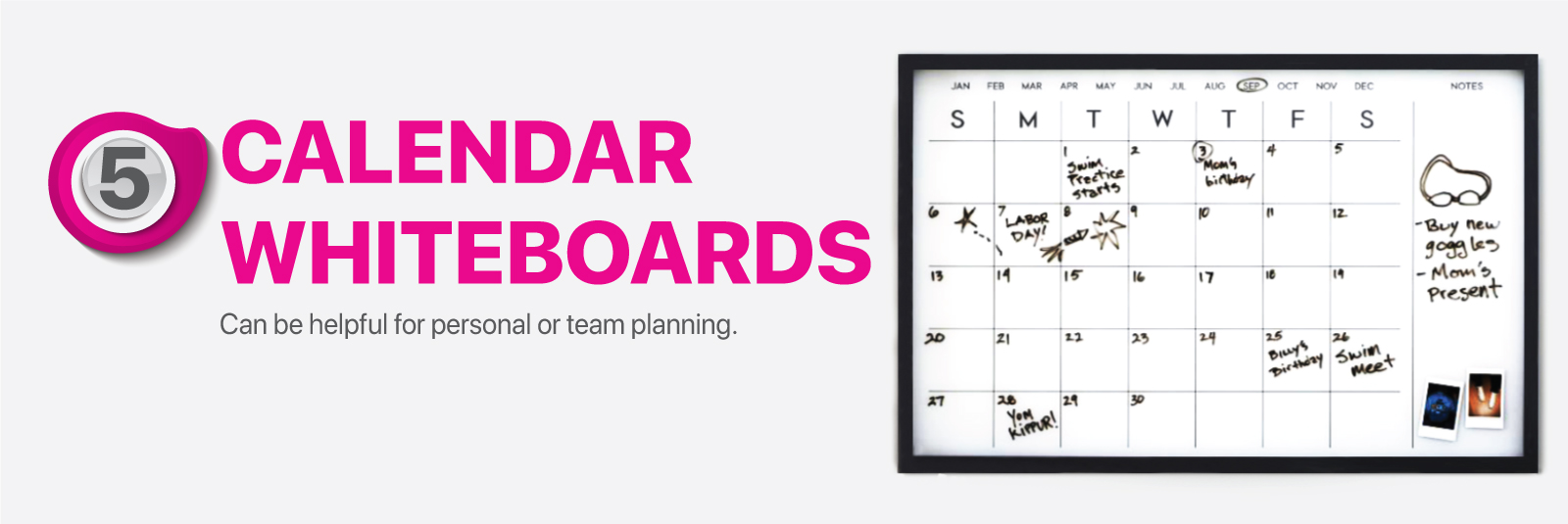
5. Calendar whiteboards
Calendar whiteboards can be helpful for personal or team planning. Remote workers might prefer them in their homes to help keep work and personal deadlines clear and organized, though some offices might choose to use these whiteboards for planning a product launch or event. These whiteboards are available for weekly or monthly planning, depending on your needs.
How to choose a whiteboard?
Knowing what considerations you have to make when choosing a whiteboard can make it a lot easier to land on a decision, especially if you’re purchasing one to use in the long run.
1. Consider the whiteboard's function
One consideration you can make is how you intend to use the whiteboard. For example, if you plan to set one up in your home office, then you might enjoy a custom option that screams your personality, such as a glass whiteboard featuring your favorite color or image. Meanwhile, if you intend to use the dry-erase board in a professional setting, a clean, glass surface with no borders offers an aesthetically elevated yet highly functional appeal. In contrast, if you plan to install a whiteboard in a classroom, opting for a colored glass whiteboard with a marker tray can bring in some fun and function in learning. On the other hand, if you move around a lot, opting for a lighter surface, such as acrylic, could be better. There are many possibilities and use cases for whiteboards, so let their intended function factor into your decision-making!
2. Measure your space
Some whiteboards come in standard sizes, so it’s important to ensure that they fit the space you intend to place them in. For example, if a board measures 4×8 feet, you want a little more leeway in your wall to successfully place a wall-mounted dry-erase board. And if you want to place the whiteboard in an odd area, such as an attic wall that may have an irregular edge, then opting for a custom-cut glass option will accommodate your space.
3. Decide on magnet compatibility
If you forecast that magnet compatibility will be essential in your whiteboard usage, opt for a magnet-compatible option, such as a magnetic glass whiteboard. Using magnets will save you time from using double-sided tape for important documents.
Conclusion
Consider how you want to use your board. Are you looking for space to write your own notes, or to collaborate with others? If it’s the latter, you’ll need a mounted, smart, or mobile whiteboard. At home or at your desk, you can experiment with the right personal whiteboard that works for you. Use these suggestions as a starting point to get an idea of your budget and preferences.
Source:
https://resources.owllabs.com/blog/best-whiteboards
https://www.technobuffalo.com/best-whiteboards
https://www.starfishsigns.com/ultimate-guide-how-to-choose-best-whiteboards/
https://www.quartet.com/quartet-blog/buyers-guide/the-difference-between-whiteboard-surface-types/#:~:text=If%20you%20want%20the%20best,will%20not%20scratch%20or%20dent.




